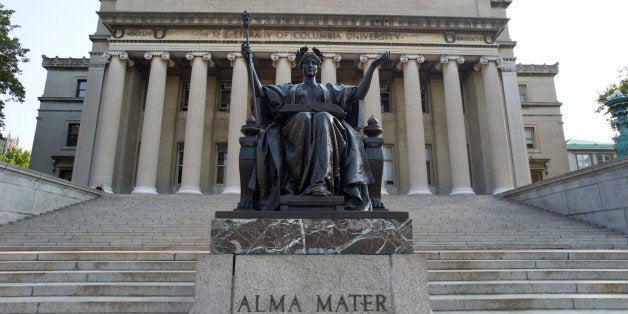
In the run-up to the first day of classes each year, students and families are inundated with higher education statistics and often left wondering what information really matters or even which facts and figures to trust. With college access and affordability already emerging as central issues in the 2016 election cycle, the year ahead promises even more confusion than usual.
Navigating the labyrinth that is higher education can be difficult undertaking for any college student and their family. I know because I was a one until this May, when I graduated from the University of Wisconsin-Madison. Students, families and the general public deserve information that is clear, meaningful and given proper context. In short, they need access to information that reflects reality. That requires dispelling misconceptions about higher education and elucidating trends underway in a complex pillar of our society.
Some higher education statistics can obscure as much as they reveal. Take the oft-cited $1.2 trillion in outstanding student debt. Stories focusing on growing student debt are frequently accompanied with anecdotes about students who borrowed six figures worth of debt to finance their degrees and are now struggling to repay their loans. These students' hardship is real, distressing and deserving of our attention. But the most recent analysis, conducted in 2012, shows that just 0.3 percent of undergraduates graduate with six figures in student debt. The fixation on students who are outliers too often overshadows a sensible dialogue on the best strategies to boost college access and mitigate student debt.
So what are the facts? Graduate students, like those in medical or law school who typically earn more upon the completion of their degrees, account for about 40 percent of all student debt even though they represent only 14 percent of students in higher education. Meanwhile, 41 percent of undergraduate students at four-year public universities graduate without any debt, and the ones who do borrow graduate with an average of $25,600 in debt, a figure that includes both education and living expenses. If that sum seems steep, consider that the national average for a new car loan was $27,800 in 2014. And while the value of a car depreciates the moment it's driven off the lot, a college degree's value endures and often grows over a lifetime.
The true cost of attending college has similarly been distorted in recent years. It's critically important to make a distinction between a university's published tuition price and the amount a student actually pays after grants and scholarships. On average, in-state students at public four-year universities paid just $3,030 in tuition and fees in the last academic year. That's substantially less than the figures frequently circulated in media accounts, which can have the unfortunate effect of convincing low-income students they can't afford to go to college.
Another common misconception is that a college degree is no longer a good investment or that tech titans like Bill Gates and Mark Zuckerberg prove that a college education isn't a worthwhile endeavor. The data bear neither of these theories out. As The New York Times reported in July, the average start-up business founder who is successful enough to attract venture capital investment is not a 20-something college dropout with no work experience, but "38, with a master's degree and 16 years of work experience." What's more, a study by the Federal Reserve Bank of New York last year revealed that a college degree has averaged a return of about 15 percent a year over the past decade. That's roughly double the historical rate of return that the stock market has yielded. In other words, a college degree remains both an excellent investment and, for many people, an essential qualification for achieving success.
Sometimes the best available official statistics, even when correctly reported, still don't give us the clearest possible picture of reality. Such is the case with the federal graduation rate, which measures only students who enroll full-time and start and finish at their first college or university. With over half of all bachelor's degree recipients now attending more than one institution before earning their degree, the federal graduation rate does not accurately reflect today's increasingly mobile students.
As a former transfer student myself, I am one of those students whose graduation is counted in the federal rates at neither of the institutions I attended. Omissions like that are why the Department of Education recently announced that it will include the Student Achievement Measure (SAM) as a supplemental resource in its new College Scorecard. SAM is a voluntary web-based tool that allows schools to share more complete progress and graduation data about all of their students, including those who transfer, go part time, or attend multiple institutions. More than a half million students who the federal graduation rate doesn't count are reflected in SAM's data. The inclusion of SAM is an important step forward, but as a voluntary tool not all institutions' data are available. Ultimately, only Congress can give the Department of Education the authority to track comprehensive graduation rates at all schools. More accurate data means greater transparency, which empowers students to make better decisions.
As students and their universities gear up for the school year, this September promises to bring countless stories on the state of higher education. But as students prepare for their classes and universities work to address the pressing issues of college access and affordability, we would do well to cut through the complexity of higher education statistics with clear and meaningful analysis.
Mike Brost, a 2015 graduate of the University of Wisconsin-Madison, is an associate at the Association of Public and Land-grant Universities.